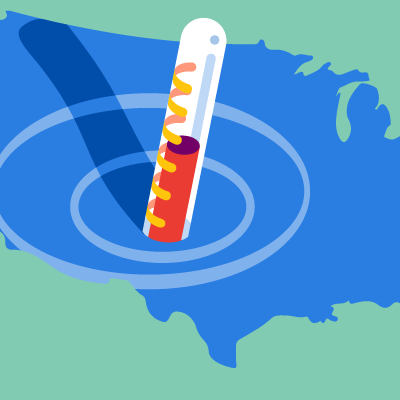Across many parts of the U.S. the frequency and intensity of flooding have increased during recent decades. Several studies indicate a connection to climate variability and change. As climate change continues a growing concern is that flood risk will worsen.
A study conducted by AIR researchers for the Society of Actuaries Research Institute used the AIR Inland Flood and Hurricane models for the United States and heavy-day precipitation and riverine flood projections from five General Circulation Models (GCMs) to estimate how climate change may influence single event return period losses to U.S. property by mid-century. The focus of the study is on inland flooding from precipitation, as opposed to coastal flooding from storm surge and sea level rise. Both off-plain and on-plain inland flooding are studied. Future projections of on-plain flooding are sourced using output from Aqueduct Floods, which is an online platform that measures riverine and coastal food risks under both current baseline conditions and future projections in 2030, 2050, and 2080.
Impacts are evaluated under Representative Concentration Pathway (RCP) 8.5 for the period 2030-2069, which is relevant to the Society of Actuary members. RCP 8.5 is a fossil-fueled development scenario that the world has been following since 2005 and it covers the largest range in projected mean global temperature projections of the RCPs.
The results of this study show how inland flood risk and loss may change across the U.S. in the future because of climate change. The intensity of heavy precipitation events is projected to increase under climate change which drives higher off-plain flood loss across much of the U.S. For on-plain flooding the picture is less clear. The average view of the five GCMs shows that on-plain flood loss is projected to decrease across much of the U.S. However along parts of the Missouri and Mississippi River Basins as well as portions of the Appalachian Mountains, on-plain flood loss is projected to increase. The results of the average GCM view are placed into context with all five GCMs which show considerable spread in projected off-plain and on-plain losses. A comparison of results from this study to those from a companion study also conducted for the Society of Actuaries Research Institute on how climate change may impact U.S. Wildfire risk shows that much of the western U.S. would experience increased losses from both wildfire and flooding by mid-century.
AIR offers a consultancy service that provides insights and solutions for additional region-perils. If you are interested, please request a consultation.
Read the report: “Potential Impacts of Climate Change on U.S. Inland Flood Risk by Mid Century”.




